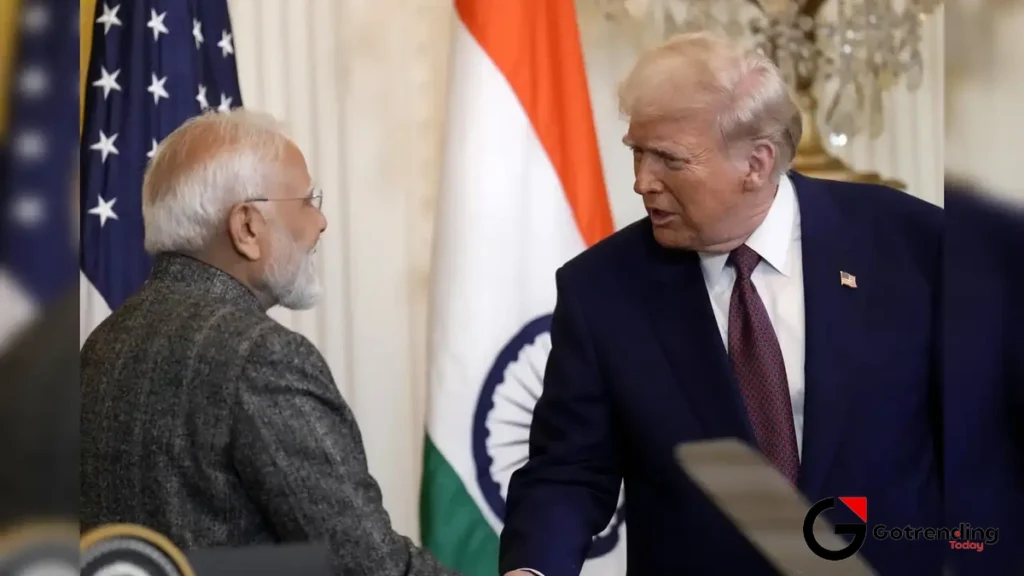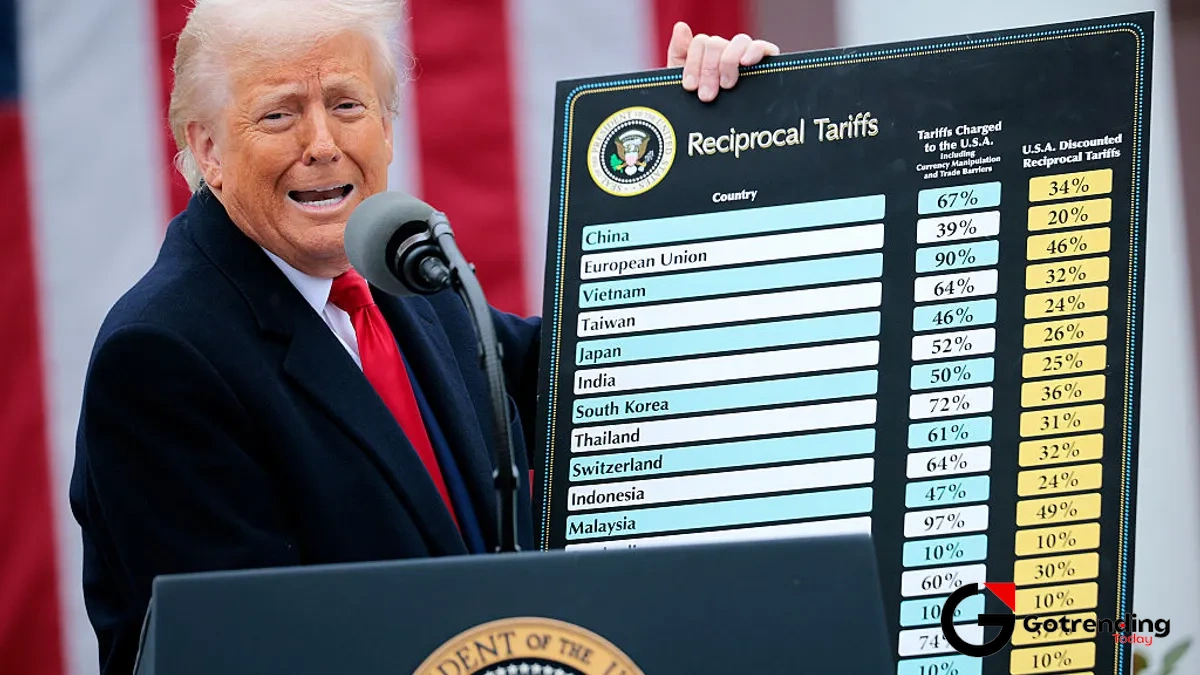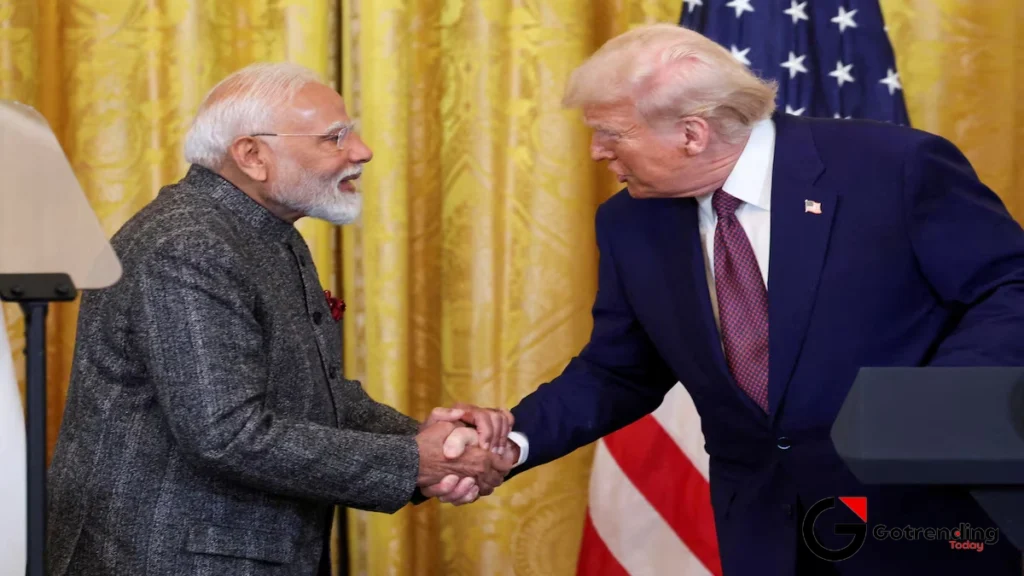Trump’s Tariff Talk is Back. Here’s Why Everyone in India Should Be Paying Attention.
Alright, let’s have a chat. Grab your coffee (or chai, in my case) and settle in. Because just when you thought global politics couldn’t get any more like a TV show rerun, Donald Trump is back in the headlines. And he’s brought his favourite economic tool with him: the tariff.
I know what you might be thinking. “Another headline about US politics? Why should I, sitting here in Bengaluru or Mumbai, care about some American politician’s economic plans?”
And that’s a fair question. But here’s the thing: this isn’t just distant political noise. What Trump is proposing is less like a gentle breeze and more like the first tremor of an earthquake that could shake the global economy to its core. And India, my friends, is sitting right on one of the fault lines. This is the big donald trump tariffs news that actually matters to our wallets, our jobs, and our future.
So, let’s cut through the jargon and the noise. Let’s break down what’s really going on, why it feels like we’ve seen this movie before, and what it could all mean for us here in India.
What’s Trump Actually Proposing This Time? The 10% and 60% Bombshells

First, let’s get the facts straight. This isn’t just vague talk; there are two specific, and frankly, radical ideas on the table.
1. The Universal Baseline Tariff: This is the big one. Trump has floated the idea of a flat 10% tariff on basically all goods imported into the United States. From anywhere. India, Germany, Vietnam, Mexico everyone gets the 10% “entry fee.” Think of it like a bouncer at a club charging every single person a cover charge, regardless of who they are.
2. The “China Special”: On top of the universal tariff, he’s talked about a much, much higher tariff specifically for Chinese goods. The number that gets thrown around is a staggering 60% or more . This is less of an entry fee and more of a “you’re not getting in” sign.
Now, a tariff is simply a tax on imports. It’s designed to make foreign goods more expensive, so that people (in this case, Americans) are more likely to buy products made in their own country. The theory is called protectionism protecting your own industries from foreign competition. But in a world as interconnected as ours, a simple action like this can set off a ridiculously complex and often painful chain reaction. A chain reaction that ends up right at our doorstep.
The Ripple Effect | How a US Tariff Can Cause a Tsunami in India

This is where it gets personal. It’s easy to dismiss the trump 10 percent tariff plan as America’s problem. It’s not. A policy like this doesn’t happen in a vacuum. It creates waves, and some of those waves could easily become a tsunami for the Indian economy.
Let’s unpack the “how.”
First, there’s the direct hit . The United States is India’s largest trading partner. We sell them a massive amount of stuff everything from pharmaceuticals and diamonds to machinery, electronics, and textiles. A 10% tariff would instantly make all of those Indian-made goods 10% more expensive for American buyers. That could mean cancelled orders for a textile factory in Tiruppur, lower profits for a pharma company in Hyderabad, or layoffs at a software services firm in Pune that relies on US clients.
But the second effect, the indirect one, is what fascinates and worries me the most. It’s all about China.
Imagine this: The US slaps a massive 60% tariff on Chinese goods. Suddenly, China has a mountain of products steel, electronics, toys, you name it that it can’t sell to its biggest customer. What does it do? It has to find new markets, and fast. So, it starts “dumping” these goods in other countries, like India, at rock-bottom prices. This could decimate our local manufacturers who simply can’t compete with state-subsidized Chinese products being sold for next to nothing. This is a huge risk to our “Make in India” ambitions.
Finally, there’s the risk of a full-blown global trade war . It never stops at one tariff. If the US imposes tariffs, you can bet your last rupee that the European Union, China, and even India will retaliate with their own tariffs on American goods. This is exactly what happened last time. It’s a tit-for-tat cycle that chokes global trade, makes everything more expensive for everyone, and creates massive uncertainty for businesses. The stock market hates uncertainty. Your investments hate it, too.
India’s Déjà Vu | We’ve Been Here Before, Haven’t We?

If any of this sounds familiar, it’s because it is. We lived through a version of this from 2018 to 2019 during Trump’s first term. Remember the headlines about US tariffs on Indian steel and aluminum? India, not one to take things lying down, retaliated with our own tariffs on 28 American products, including almonds, apples, and walnuts. It was a proper, if small-scale, trade skirmish.
What’s so ironic, and a little frustrating, is that India and the US only just settled these disputes. In mid-2023, both countries agreed to terminate six outstanding disputes at the World Trade Organization (WTO). It felt like a fresh start for US-India trade relations , a move towards deeper cooperation. Now, the very person who started that fire is talking about lighting an even bigger one. You can almost hear the collective sigh from the Ministry of Commerce in Delhi.
This history is important. It shows two things. One, Trump is serious when he talks about tariffs; it’s not always just a bluff. And two, India has its own playbook for retaliation. We’re not just a passive victim in this story. But honestly, a trade war is a war no one really wins. It’s like two people arguing while setting their own houses on fire. To learn more about other critical national issues, you can read about the High Court Karnataka updates.
So, What’s the Real Game Plan for India? (And for You?)
Let’s be clear: This is all still in the “proposal” stage. It’s campaign talk, designed to win votes. But we’d be foolish to ignore it. So what’s the strategy?
For the Indian government, the game is diversification. For years, there has been a push to reduce our reliance on any single market and to strengthen our domestic economy. Initiatives like “Make in India” and the Production Linked Incentive (PLI) schemes are all part of this grand strategy. The stronger and more self-reliant our own economy is, the better we can weather these external shocks. There’s even a potential, though risky, silver lining. If companies desperately want to move their supply chains out of China (a trend called “friend-shoring” or “China+1”), a stable and capable India could be a very attractive destination.
For you and me, the impact is more personal. It’s a reminder of how interconnected our world is.
- Prices: A global trade war could make imported goods, from your iPhone to your favourite brand of olive oil, more expensive.
- Jobs: If you work in an export-heavy sector like IT, textiles, or pharmaceuticals, this is something to watch closely.
- Investments: The stock market reacts to global instability. This kind of news could lead to volatility.
It’s not about panicking. It’s about being aware. It’s about understanding that the impact of trump tariffs on india is not a hypothetical academic exercise. The ripples could genuinely affect our daily lives.
Frequently Asked Questions (FAQs)
So, what exactly is a tariff in simple terms?
Think of it as an entry tax. When a product from another country arrives at the border, the government charges a fee (the tariff) to let it in. This makes the foreign product more expensive for consumers, theoretically encouraging them to buy locally made goods instead.
Will Trump’s proposed tariffs make my phone or laptop more expensive?
It’s complicated, but potentially yes. Many electronics are assembled in countries like China and Vietnam using parts from all over the world. A universal 10% tariff would raise the cost for the US market, but the resulting global supply chain chaos and retaliatory tariffs could disrupt production and raise prices everywhere, including India.
But didn’t India and the US just solve all their trade problems?
They did! In 2023, they resolved several long-standing disputes at the WTO, which was a huge step forward. That’s what makes this new talk of tariffs so jarring. It feels like taking two steps forward, only to be threatened with ten steps back.
Is this all just campaign talk, or will it actually happen if he wins?
This is the billion-dollar question. While campaign promises can be dialed back, Trump has a track record of implementing tariffs. Most analysts believe he would act on these proposals to some degree, even if not to the full 60% on China. It’s a core part of his economic ideology.
Which Indian industries are most at risk from these tariffs?
The most exposed sectors would be those that export heavily to the US. This includes gems and jewelry, pharmaceuticals, electronics, machinery, textiles and apparel, and certain agricultural products. The indirect risk from Chinese dumping would affect domestic producers of steel, chemicals, and consumer electronics.
The political drama can often be a distraction, much like the controversies surrounding public figures such as the one highlighted in the Kavin issue . But this is different.
Ultimately, the return of tariff talk is more than just news. It’s a signal. A signal that the era of smooth, predictable globalization might be hitting a major speed bump. Whether these specific protectionist policies come to pass or not, the conversation they’ve sparked isn’t going away. For a rising economic power like India, learning to navigate this new, more turbulent world isn’t just a good idea it’s absolutely essential for the road ahead.













